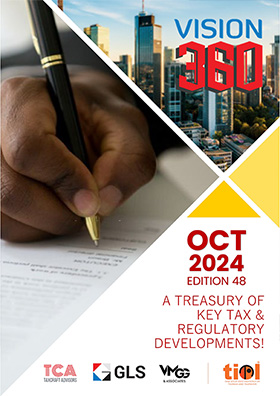Cus - Notfn 46/2011 - Gold dore bars which are an impure form of gold appear to have been thought to be refined gold and this in turn led to needless doubt regarding capability of Indonesian supplier to produce goods for jewellery - Board Circular ultra vires s. 151A of CA, 1962: HC
By TIOL News Service
NEW DELHI, APR 27, 2016:
Background
During the period 2012-2015, the members of the Association regularly imported assorted gold jewellery from Indonesia classifiable under Tariff Heading 7113 19 10 of the CTA, 1975 from the Indonesian Supplier-PT Antam, Jakarta, which is owned by the Government of Indonesia.
In terms of the Exemption Notification Nos. 46/2011-Cus and 12/2012-CE, the benefit of 'NIL' rate of Customs Duty was granted to the impugned goods if the goods are imported into India from Indonesia, a country listed in Appendix-I to the said notifications.
According to the Petitioner Association, its members had submitted Country Of Origin Certificates and the entire set of documents which established the genuineness of the goods imported by them and the declarations on the invoices and supporting documents with the Bills of Entry which has also substantiated that the goods of Indonesian Origin have been imported from Indonesia only. Notwithstanding that the above certificates were produced, the Respondents appear to have approached the authorities concerned in Indonesia to check the same in terms of Article 16 of the Operational Certification Procedure as set out in Annexure III of the Customs Tariff Origin Rules.
In response to the said request, the Municipality of Cakung, Indonesia issued clarifications dated 12th June 2015 as well as 30th September 2015 clarifying that the said COO Certificates were issued by them and that the gold jewellery imported from PT-Antam were of Indonesian origin.
It is stated that despite the categorical explanations furnished in the letter dated 30th September 2015 along with communications exchanged with the Indian Embassy in Indonesia, the Respondents proceeded to issue the impugned Circular dated 6th October 2015 denying the preferential customs duty benefit to the members of the Petitioner Association. The second Circular dated 20th January 2016 was issued to direct the Assessing Authority to not only follow the earlier circular but also further demand a bank guarantee of 100% of the duty differential while making such provisional assessment.
Both these Circulars are under challenge in the present writ petitions.
Confirmation from Cakung Municipality
On 30th September 2015, in response to a letter dated 22nd August 2015 issued by the Embassy of India in Jakarta, the Municipality Office in Cakung, Indonesia confirmed that the COO certificates had been issued in compliance with the prevailing regulations, including the regulations of the Trade Ministry of Indonesia. It also confirmed that the COO certificates were genuine and had been issued in accordance with Rule 13 of the ASEAN-India Free Trade Agreement. The letter clarified that P-Antam is also engaged in refining of gold dore bars which are of Indonesia origin only and thus 100% of gold refined is of Indonesian Origin. It confirmed that no gold dore bars were imported from any country.
Clarification by P-Antam
Inter alia it was clarified by P-Antam by its reply dated 27th April 2015 that the COOs had been issued by the competent authority at their request and were genuine. It was further stated that the said COOs were issued "as per Rule 13 of India- AseanFTA". It was stated that P-Antam is a gold miner, refiner, jewellery and minted coins manufacturer. It was a state owned company with the Government of Indonesia holding majority/controlling shares. It was categorically stated that the exported goods as well as components/materials used in the production and exports of the goods are only of Indonesian origin and are not of mixed or undetermined origin; that the export of mining ore from Indonesia is prohibited. It was added that P-Antam had recorded the previous processing of about 200 MT of gold dore.
Impugned Circular
On 6th October 2015, the CBEC issued the impugned Circular stating that the Issuing Authority had forwarded a letter from P-Antam that " they do not maintain any inventory to indicate the origin of the gold ore or gold dore bars, which are smelted for the purpose of producing refined gold (raw material/input for the manufacture of gold jewellery) ".
The Circular further mentions that the Issuing Authority has stated that the refinery annually produced 200 tons of refined gold "whereas the mining capacity of Indonesia as per information in the public domain is no more than 65 tons." The Indian Embassy in Jakarta, Indonesia informed that 37 tons of gold (57%) mined in Indonesia was exported in the form of Gold Powder, Lumps and Cast Bars. It was further stated - "in other words, the gold produced by the supplier in Indonesia has been made from mixing gold dore bars of foreign origin along with domestic origin without maintaining any records of origin."
Since the manufacturers were using both, originating (wholly produced) and non-originating inputs in manufacture of gold jewellery and since there was an absence of accounting which would indicate the origin of gold used for exporting, it would not be possible to determine the origin of the gold ore that had gone into manufacture of jewellery imported into India. Hence it was stated that the gold refined by P-Antam did not conform to the criteria of 'wholly obtained' from Indonesia and, therefore, the gold used for the manufacture of jewellery could not qualify for the benefit as 'originating goods'.
Submissions of the Petitioners
P-Antam group owned various mines in Indonesia and received gold dores from such mines. Merely because a separate inventory of gold received from these mines was not maintained, there was no need to doubt the origin of gold.
The impugned Circular proceeded on the basis that PT-Antam had stated that it had produced '200 MTs of refined gold'. However, the letter from P-Antam letter clearly stated that they had "processed about 200 MT of gold dore". It was stated that as clarified by the Indonesian authorities, gold dore is an impure form of gold which is subjected to further refining for manufacturing refined gold.
The impugned Circular dated 6th October 2015 was issued in excess of the powers under Section 151A of the Act; that the impugned Circular was based on factually erroneous premises.
It was further submitted that the power under Section 151A of the Act for issuing of Circulars/clarifications is for a limited purpose for clarifying ambiguous provisions and/for mitigating rigours of law and for an effective administration of taxing statute. It cannot be issued to fasten liability and raise demand of tax.
As far as the Circular dated 20th January 2016 was concerned, it was submitted that it was ultra vires under Section 151A (b) of the Act which specifically states that there can be no circular issued which seeks to interfere with the discretion of the quasi-judicial authority.
It was also pointed out that the Respondents ought to have followed the provisions of the CPDA Regulations. Regulation 2 (2) thereof provides for maximum payment of only 20% of duty differential under Provisional Assessment. Therefore, the insistence on furnishing a bank guarantee for the entire differential duty was illegal and was liable to be quashed.
Submissions of the Respondents
It was stated that the Central government noticed a sudden increase in import of gold jewellery from Malaysia and Indonesia, and therefore a retroactive check was done on the representative COOs. It was only based on these reports that the Circular dated 6th October 2015 was issued.
It was further submitted that the Circular dated 6th October 2015 only carves out a complete procedure to be followed regarding import of gold jewellery and not a direction to the quasi judicial authority to decide the issue in any particular manner as contended by the Petitioners. It was also submitted that the importer has ample opportunity to present his case before the Customs authority concerned to prove the origin of the imported goods for availing tariff concession under India-ASEAN FTA.
The Circular dated 6th October 2015 stipulating the obtaining of a bank guarantee of 100% of the duty differential emerges from the Regulation 4 so as to adequately secure the revenue and ensure uniformity of provisional assessment across all ports.
After considering the elaborated submissions made by both sides and extracting the provisions of the ASEAN-FTA, Rules of Origin, Operational Certification Procedures, the High Court inter alia observed thus -
Erroneous Circular:
+ A clear distinction was made from the beginning between refined gold and gold dore.
+ It appears that an erroneous interpretation of the clarification issued by P-Antam has led to the impugned Circular dated 6th October 2015 being issued. The impugned Circular does appear to proceed on surmises which do not find support in any of the material that has been produced by the Respondents before the Court.
+ In the considered view of the Court, there appears to be a misunderstanding on the part of the Respondents of what was being conveyed by P-Antam in its letters to the Indian Embassy. What is evident from the said letters is that only the gold sourced from the listed mines in Indonesia had been used in the production of the gold jewellery that was exported to India. Further such gold was only of Indonesian origin and not of mixed or undetermined origin. Therefore it is inconceivable how the impugned Circular could proceed on the basis that there has been a mixture of gold dore bars of foreign origin with those of domestic origin without maintaining any records of origin.
+ There appears to be confusion regarding gold dore bars. Gold dore bars which are an impure form of gold appear to have been thought to be refined gold. This in turn led to the needless doubt regarding the capability of P-Antam to produce goods for jewellery .
+ If there was any doubt about appropriate inventory not being maintained regarding the origin of the gold, then either the verification process as set out in the Customs Tariff Origin Rules, which in turn adopted the provisions in the Appendix-D to the ASEAN-FTA, could have been undertaken or a questionnaire issued for that purpose. No recourse to such process appears to have been undertaken. The inescapable conclusion is that there was no material for the Respondents to draw the conclusions that form the factual basis of the impugned Circular.
Section 151A of the Customs Act - Circular ultra vires
+ The proviso (a) to Section 151A of the Act does not permit the issuance of instructions, orders, and directions which might require an Officer of Customs to make a particular assessment or to dispose of a particular case in a particular manner.
+ This prohibition is not different from Section 119 of the Income Tax Act, 1961 ('IT Act') and Section 37 B of the Central Excise Act, 1944 ('CE Act').
+ The legal position governing the above provisions of the IT Act as well as the CE Act as explained in Faridabad Iron & Steel Traders Association v. Union of India (supra) would apply to Section 151A of the Act as well.
+ Power under Section 151A cannot be used to whittle down the scope of an exemption.
+ Section 151A of the Act is for a very limited purpose of issuing of instructions to officers of customs for the purpose of 'uniformity in the classification of goods or with respect to the levy of duty thereon'. The above provision does not envisage any amendment being made to an exemption notification that may have been issued in exercise of powers under Section 25 (1) of the Act.
+ It is plain that the impugned Circulars dated 6th October 2015 and 20th January 2016 do in fact whittle down the scope of the exemption available for import of gold jewellery from Indonesia, across the board, only because, according to the Department, the COOs issued by the Issuing Authority in Indonesia could not be verified.
+ The Circular dated 6th October 2015 requires an Officer of the Customs who has issued a SCN not to pass orders of provisional assessments. It requires the original COOs along with 'appealable orders' to be sent to the CBEC. Clearly, the Circular interferes with the discretion to be exercised by the customs officer who is performing a quasi-judicial function. Para 7.1 of the said Circular requires the importers to present facts in support of the COOs, which is not a requirement in the original exemption notification. There is considerable merit in the contention that this goes beyond the mandate of the Customs Tariff Origin Rules and constitutes an unreasonable and onerous condition as far as the importers are concerned.
+ As far as the circular dated 20th January 2016 is concerned, Regulation 2 (2) of the CPDA Regulations provides for a maximum payment of only 20% of duty differential in the case of a provisional assessment. The insistence on a bank guarantee for the entire differential duty appears to be contrary to Regulation 2 (2). The said Circular does not leave the issue of what conditions should be imposed for provisional assessment to the concerned customs officer. It requires the officer to demand 100% bank guarantee even in respect of those B/Es which have been provisionally assessed under Section 18 of the Act. It certainly is contrary to proviso (a) to Section 151A inasmuch it dictates to the customs officer in what manner he should complete a provisional assessment.
+ The impugned Circulars dated 6th October 2015 and 20th January 2016 are ultra vires Section 151A of the Act and unsustainable in law.
SCN issued to J B Overseas is invalid
+ Perusal of the SCN issued to M/s. J.B. Overseas reveals that it is a virtual reproduction of the impugned Circular dated 6th October 2015.
+ Apart from the fact that the SCN suffers from the above fatal flaw, it has been issued overlooking the COOs produced by the said importer verified by Issuing Authority. Therefore, the said SCN and the proceedings consequent thereto are held to be invalid and unsustainable in law.
+ Since the SCN has been issued on the basis of an invalid Circular, relegating the Petitioners to the alternative remedy of statutory adjudication and consequent appeal would be a pointless exercise.
Conclusions
++ The Circular dated 6th October 2015 issued by the CBEC and the instructions issued on that basis on 20th January 2016 by the CBEC addressed to the customs officers are in violation of Section151A of the Act and are hereby quashed.
++ The proceedings consequent thereto the abovementioned circulars including the communication dated 22nd January 2016 issued to M/s. J.B. Overseas requiring it to furnish a bank guarantee of 100% of the duty differential while making provisional assessment are hereby set aside.
++ Any SCN or any application for provisional release of goods by members of the Petitioner Association and similarly placed importers would be decided by the customs officers in accordance with law uninfluenced by any of the abovementioned circulars, instructions or directions.
The Writ petitions were disposed of.
(See 2016-TIOL-833 -HC-DEL-CUS)















